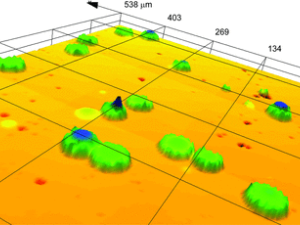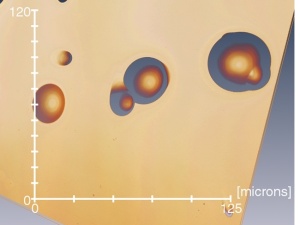Interfacial Self-Assembly of Amphiphilic Dual Temperature Responsive Actuating Janus Particles
Abstract
Amphiphilic Janus particles feature the combination of two different functional materials in one single colloid, as well as the possibility of self-assembly at interfaces into complex superstructures. In this article, the self-assembly of dual temperature responsive amphiphilic Janus particles at liquid–liquid interfaces and their subsequent conversion into an actuating layer-shaped surface are presented. These microparticles are produced in a capillaries based continuous flow microfluidic device by photoinitiated radical polymerization. The hydrophobic part of the Janus particles contains a liquid crystalline elastomer (LCE), which performs a strong actuation up to 95% during the nematic–isotropic phase transition. The other side consists of a p(NIPAAm) hydrogel, which features volumetric expansions up to 280% below the lower critical solution temperature. A multistep molding process is developed to uniformly align the Janus particles at a toluene/water boundary surface and to embed the particles into a hydrogel matrix. A particle covered hydrogel layer is obtained, which features a collective actuation of the rod-like LCE parts on the surface and a bundling of the resulting forces during the phase transition.
Full article:
Source: Preview Image: Mark Evans/iStockphoto



